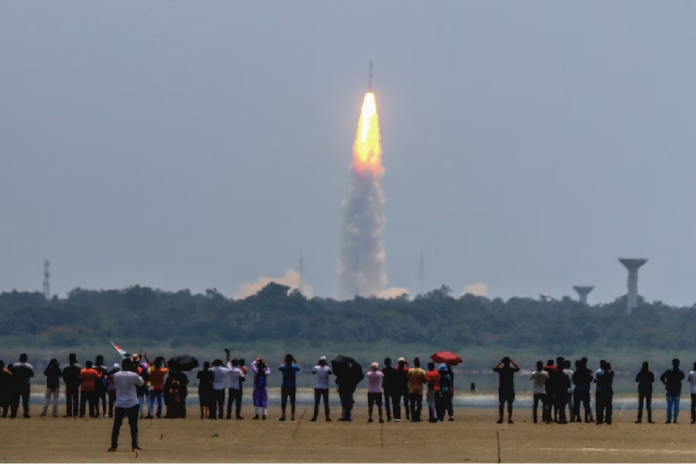Prime Minister Narendra Modi said on Saturday that Aditya-L1, the first solar mission of the Indian Space Research Organization, had arrived at its destination in less than the four months that were originally projected.
The spacecraft, which was launched on September 2 of last year, is now positioned at Lagrange Point 1, where it will conduct an extensive study of the Sun with a particular emphasis on the solar corona and how it affects space weather.
“India establishes another historic moment. In a post on the social media site X, formerly known as Twitter, Modi said, “It is a testament to the relentless dedication of our scientists in realising among the most complex and intricate space missions.”
Over the course of four months, the satellite traveled around 1.5 million km (930,000 mi), which is a small portion of the 150 million km that separates Earth and the Sun.
The satellite is positioned near Lagrange Point, which benefits from gravity, which keeps objects relatively fixed and uses less fuel for the spacecraft.
Aditya-L1, outfitted with seven payloads, is expected to carry out in-situ observations and remote solar sensing for around five years.
This mission, which gets its name from the Hindi word for the sun, comes after ISRO recently made history by being the first nation to set foot on the Moon’s south pole, surpassing Russia’s unsuccessful Chandrayaan-3 mission, which was intended to land on Luna-25. In August of last year, Chandrayaan-3 touched down on the Moon’s uncharted south pole.
With an emphasis on issues influencing projects like Elon Musk’s Starlink communications network, scientists working on the project hope to learn more about how solar radiation affects the growing number of satellites in space.
Former ISRO scientist Manish Purohit stated, “We definitely need to know more about the Sun, as it controls the space weather.”
According to Purohit, the low earth orbit will become “super” busy in the upcoming years.
“Satellites are going to become the main stay of all tech on Earth with Quantum implemented, with internet connectivity, disaster warning system, resource utilisation and many more applications,” Purohit stated.
He explained that having a spacecraft stationed at L1 serves as an early warning system for impending solar storms, providing an approximate one-hour head start.
Among the many initiatives ISRO has planned for the year are the mission to study the Sun and NISAR, a low-Earth orbit observatory system that ISRO and NASA built together. NISAR is ISRO’s first human space mission.
Once every twelve days, NISAR will map the entire world, providing information on how ecosystems, ice mass, biomass of flora, sea level rise, ground water, and natural hazards like earthquakes, tsunamis, volcanoes, and landslides are changing.
read more exiting daily news on vimla.in

